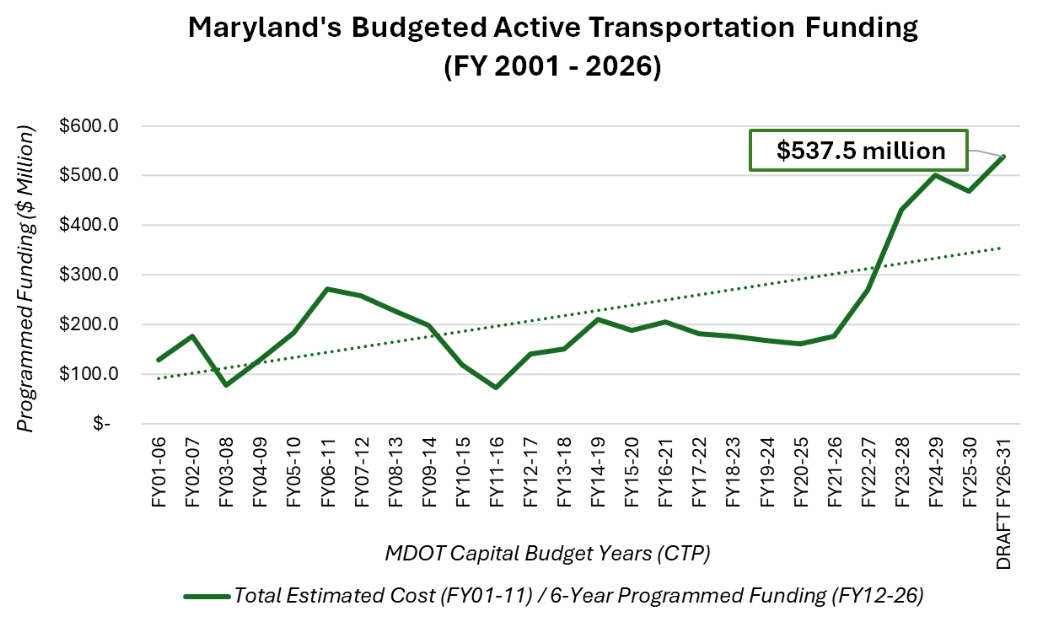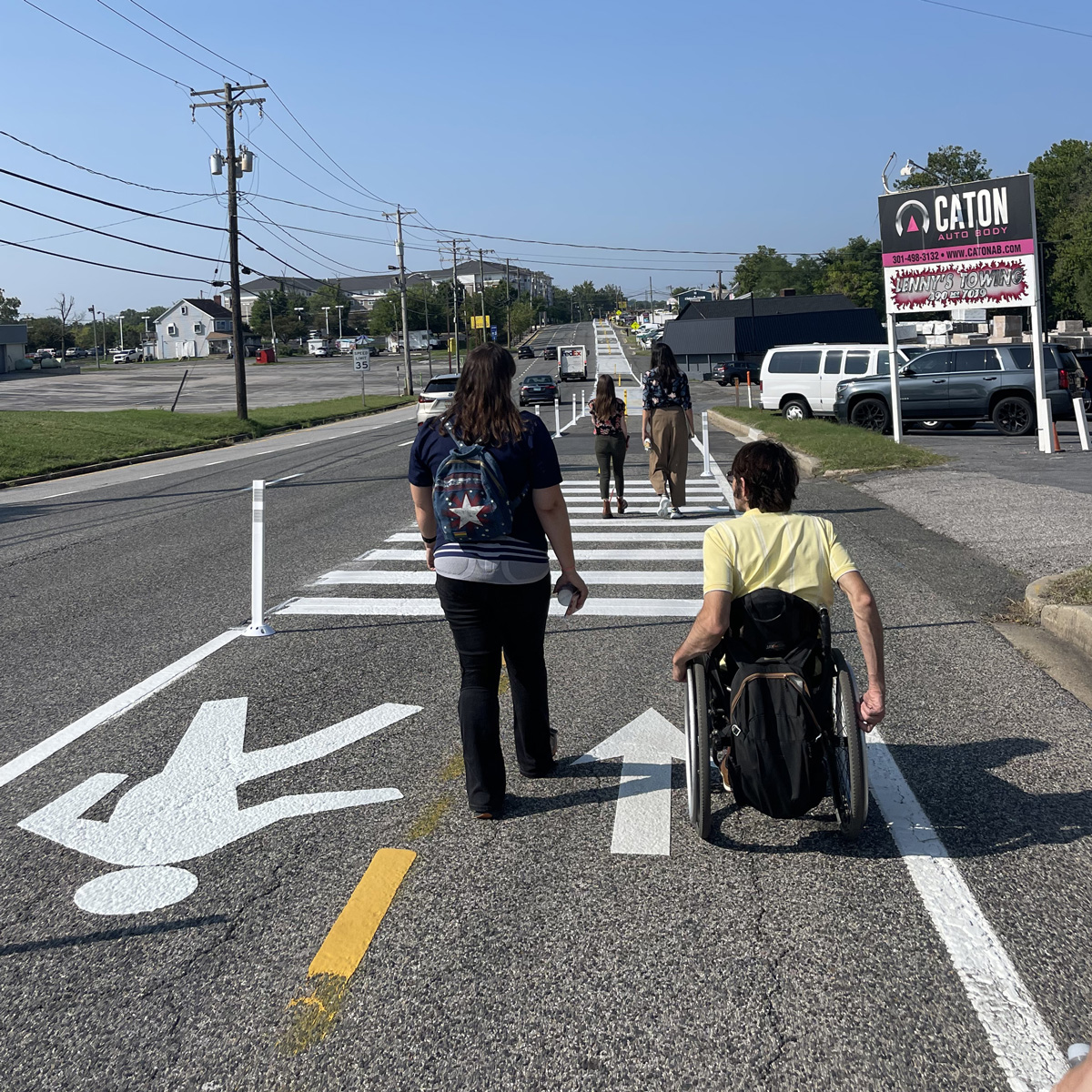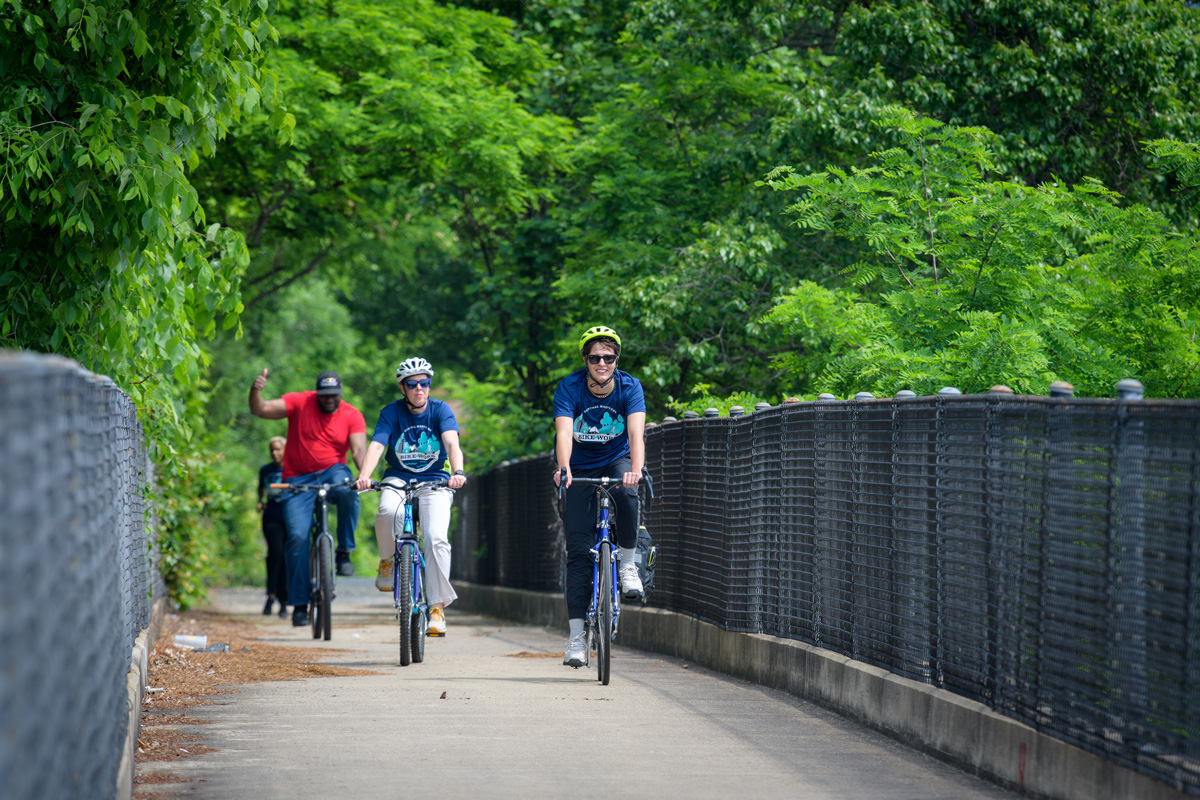Tie up your laces and strap on your helmets. The Maryland Department of Transportation wants to make its largest investment on record in bicycle and pedestrian projects. The Department’s draft six-year capital budget plan includes more than $537 million in active transportation projects. Of this, more than $240 million is dedicated to the actual construction – the final phase of implementation – of bicycle and pedestrian projects.
Active transportation projects receiving MDOT funds range from ADA-accessible sidewalk improvements on state highways to grants for local governments to develop shared-use paths and on-street bike lanes. These investments will deliver important results, making communities safer, more accessible and more connected.

The most vulnerable users of our roads – defined as people who walk, bike or roll – are particularly susceptible to being killed or injured in a crash. Last year, 173 people who were walking or biking lost their lives on Maryland’s roads. This represents nearly 30% of all the people killed on Maryland’s roads last year. The loss of one life is too many and unacceptable.
As a Vision Zero state, the Department is committed to eliminating all vehicle-related deaths and serious injuries on our roadways by 2030. The Maryland Department of Transportation is Serious About Safety and strives to provide the safest transportation network in the nation.

A “quick-build” shared-use path that MDOT installed on US 1 in Howard County (MDOT).
Targeted investments in Maryland’s sidewalks, bike lanes and accessible trails will save lives and improve safety and accessibility for people walking, biking and rolling. A few of these projects include:
- The St. Michaels Nature Trail Extension: This project will add 1.25 miles to the scenic trail, including a new bridge over wetlands and various amenities to enhance the user experience.
- ADA Street and Sidewalk Improvements in Baltimore City: These upgrades will improve accessibility and safety for people walking, biking and rolling. The project includes new sidewalks, curb ramps, crosswalks, transit stops and pedestrian signals – all brought up to ADA compliance.
- Sidewalk Connectivity in Cresaptown: MDOT is adding sidewalk infrastructure along US 220, MD 53 and MD 636 to improve pedestrian safety and traffic operations in the area.
- US 1 Corridor Enhancements in Prince George’s: MDOT is advancing improvements along the 11-mile US 1 corridor to enhance pedestrian and bicycle safety, increase community connectivity and reduce congestion. This project connects to the “quick-build” shared-use path that MDOT installed on US 1 in Howard County (pictured above).

Investments in Maryland’s sidewalks, bike lanes and accessible trails will improve safety and accessibility for people walking, biking and rolling. (MDOT)
Visit mdot.maryland.gov/CTP to learn more about bicycle and pedestrian projects in your area.
Quinn Wallace is an Active Transportation Planner at the Maryland Department of Transportation.

